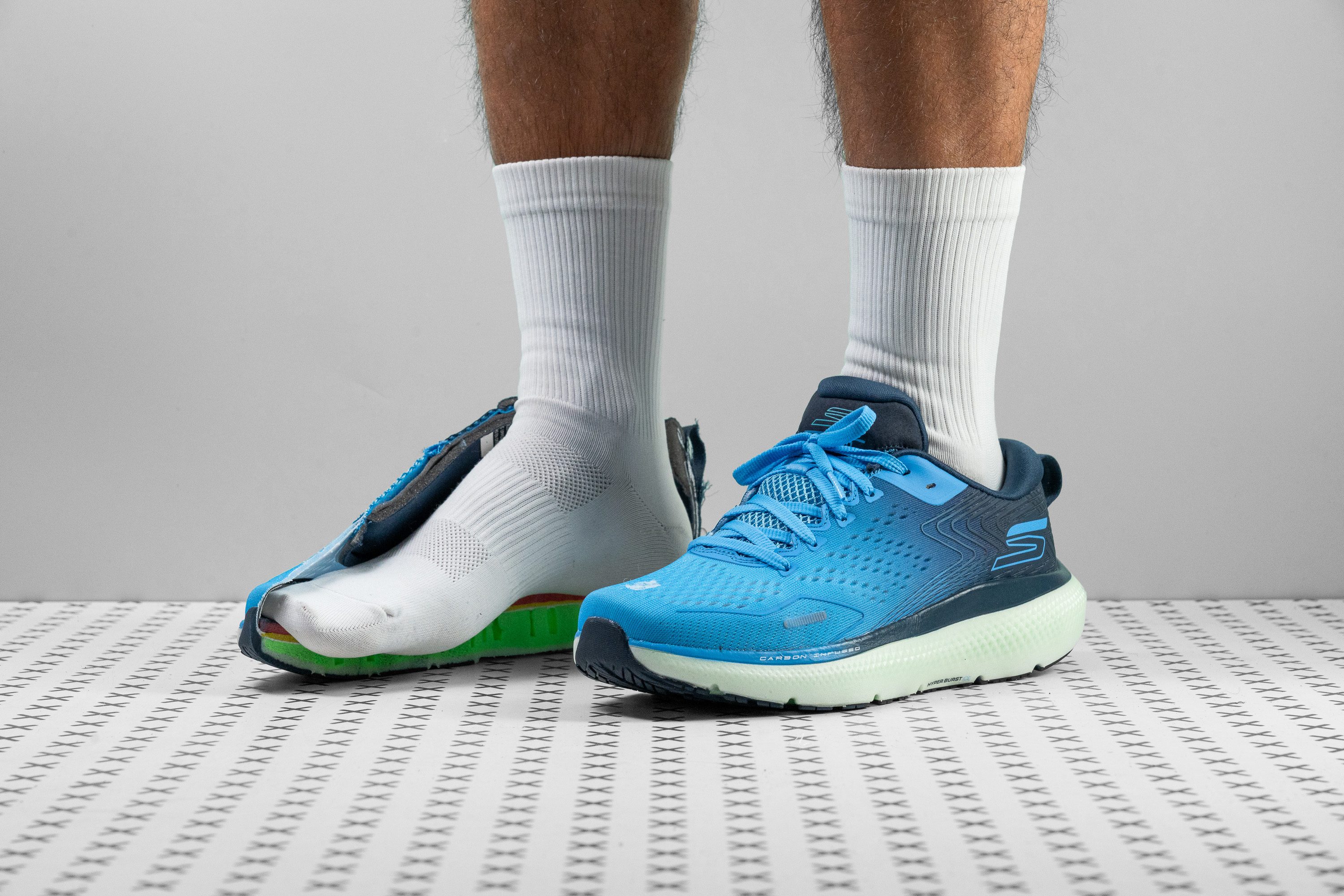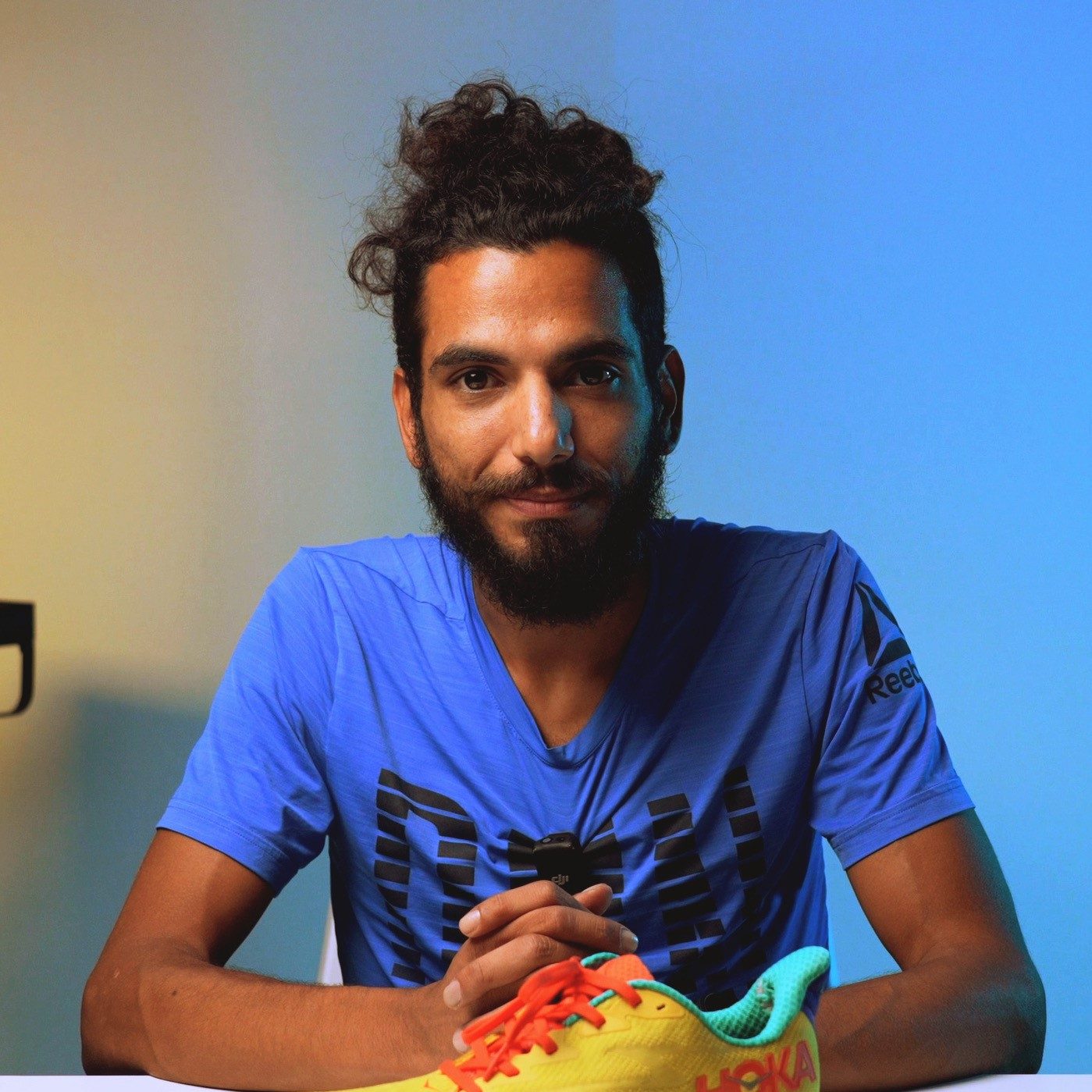Our verdict
- Top pick in best Skechers running shoes
Pros
- Well-cushioned
- Carbon-infused H-plate feels responsive
- Interesting rocker geometry
- Good for long distances
- Generously padded and forgiving upper
- Great price per performance
Cons
- Heavier than average
- Not ideal for wide feet
- Questionable upper durability
- Needs better grip
Audience verdict
- Top 2% in road running shoes
- Top 20% in Skechers running shoes
Comparison
The most similar running shoes compared
+ + Add a shoe | |||||
|---|---|---|---|---|---|
| Audience score | 92 Superb! | 86 Good! | 84 Good! | 88 Great! | |
| Price | $125 | $160 | $140 | $90 | |
| Pace | Daily running | Daily running | Daily running | Daily running | |
| Shock absorption | High | - | Moderate | Moderate | |
| Energy return | Moderate | - | Low | Low | |
| Traction | Moderate | - | Moderate | High | |
| Arch support | Neutral | Neutral | Neutral | Neutral | |
| Weight lab Weight brand | 10.1 oz / 285g 9.7 oz / 275g | 10.3 oz / 293g 10.6 oz / 300.5g | 10.5 oz / 298g 11.1 oz / 314g | 9.2 oz / 261g 9.3 oz / 263g | |
| Drop lab Drop brand | 6.5 mm 6.0 mm | 8.1 mm 8.5 mm | 5.2 mm 5.0 mm | 6.0 mm 6.0 mm | |
| Strike pattern | Mid/forefoot | HeelMid/forefoot | Mid/forefoot | Mid/forefoot | |
| Size | True to size | True to size | True to size | True to size | |
| Midsole softness | Soft | Balanced | Balanced | Balanced | |
| Difference in midsole softness in cold | Normal | Small | Normal | Small | |
| Toebox durability | Decent | Good | Decent | Bad | |
| Heel padding durability | Bad | Decent | Good | Decent | |
| Outsole durability | Good | Good | Good | Good | |
| Breathability | Moderate | Moderate | Moderate | Breathable | |
| Width / fit | Narrow | Medium | Narrow | Medium | |
| Toebox width | Medium | Medium | Narrow | Medium | |
| Stiffness | Moderate | Stiff | Stiff | Stiff | |
| Torsional rigidity | Stiff | Stiff | Moderate | Stiff | |
| Heel counter stiffness | Moderate | Moderate | Stiff | Moderate | |
| Rocker | ✓ | ✗ | ✗ | ✗ | |
| Heel lab Heel brand | 34.1 mm 38.0 mm | 32.1 mm 30.5 mm | 33.2 mm 30.0 mm | 32.7 mm 29.0 mm | |
| Forefoot lab Forefoot brand | 27.6 mm 32.0 mm | 24.0 mm 22.0 mm | 28.0 mm 25.0 mm | 26.7 mm 23.0 mm | |
| Widths available | Normal | Normal | Normal | Normal | |
| Orthotic friendly | ✓ | ✓ | ✓ | ✓ | |
| Season | All seasons | All seasons | All seasons | SummerAll seasons | |
| Removable insole | ✓ | ✓ | ✓ | ✓ | |
| Ranking | #6 Top 2% | #193 Bottom 48% | #227 Bottom 39% | #135 Top 36% | |
| Popularity | #270 Bottom 28% | #323 Bottom 13% | #43 Top 12% | #275 Bottom 26% |
Who should buy
We recommend the Skechers Go Run Ride 11 as an excellent choice for:
- Runners of all experience levels who prioritize comfort in their daily trainers
- Anyone looking for a plated shoe that's responsive while still being relatively flexible and forgiving
- Runners in the market for a versatile daily trainer that is capable of long distances as well as some speedwork
- Mild pronators who want a neutral road shoe that feels stable underfoot
- Thrifty runners who want a premium feeling shoe that won't break the bank
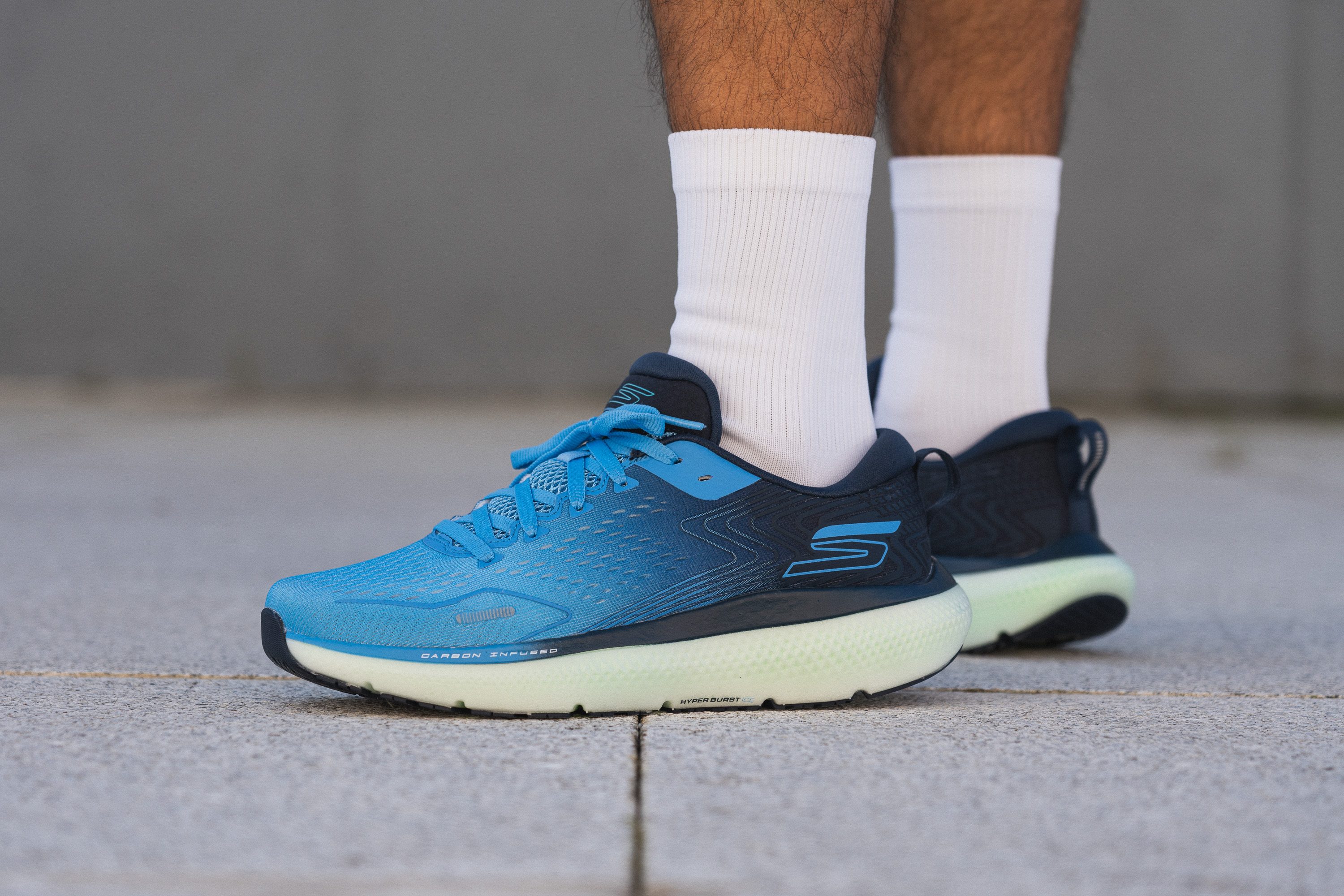
Who should NOT buy
Despite the carbon plate and supercritical midsole foam, the GRR 11 isn't a race-ready performance shoe. For a daily trainer that makes a better race day companion, we recommend the slightly more expensive Saucony Endorphin Speed 3.
The GRR 11 could use a bit of a diet, especially for those who prefer lightweight shoes. Instead, we recommend checking out the Brooks Hyperion Max which also boasts a healthy stack but at a feathery 7.51 oz (213g).

While the GRR 11's toebox isn't snug per se, we think that runners with broad feet would benefit from a shoe with more internal real estate like the New Balance Fresh Foam X Kaiha Road.
Cushioning
Shock absorption
The Skechers GO RUN Ride 11 offers solid cushioning with 131 SA in the heel and 106 SA in the forefoot. At these levels, it’s a dependable choice as your go-to daily trainer for most runs.
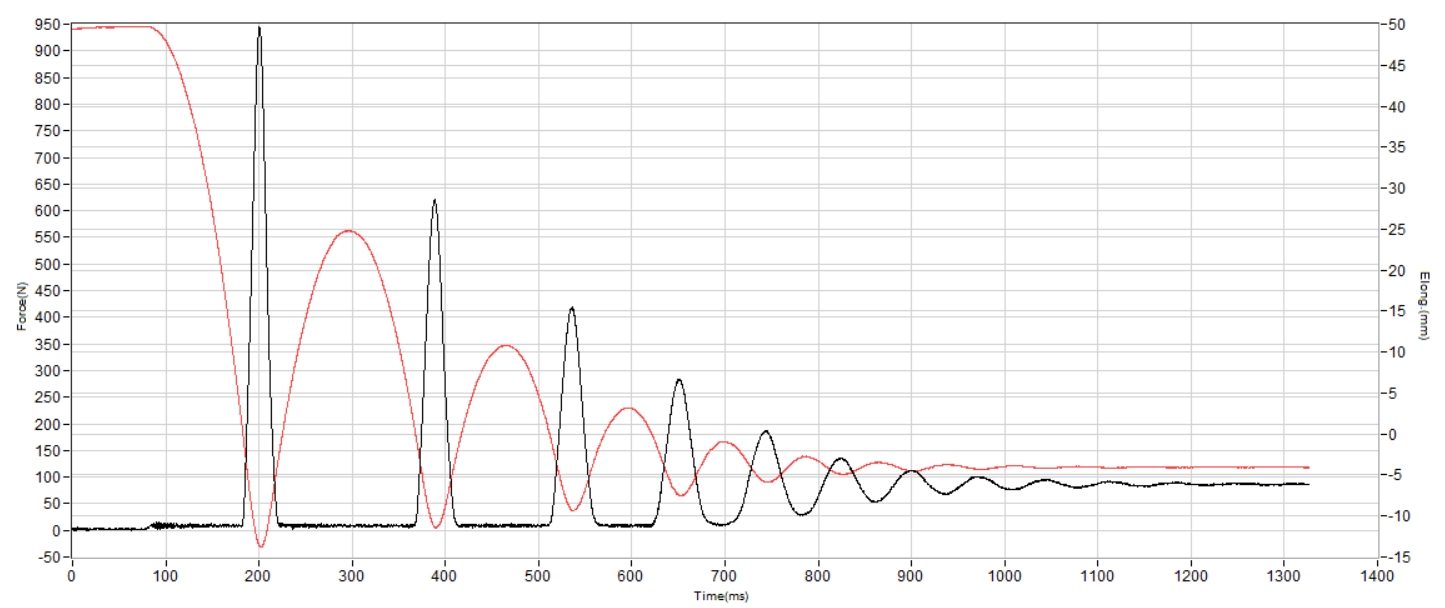
| GO RUN Ride 11 | 131 SA |
| Average | 129 SA |
Energy return
We were a bit let down by the low energy return of the GO RUN Ride 11. While 55.5% isn’t a disaster, we expected more from the brand that introduced (and patented) the supercritical, CO₂-infused EVA foam.
| GO RUN Ride 11 | 55.5% |
| Average | 58.5% |
Heel stack
Using our caliper, we measured the GRR 11's heel stack to be 34.1 mm thick; quite a bit lower than the 38 mm stated by Skechers, but within the average range for road shoes.
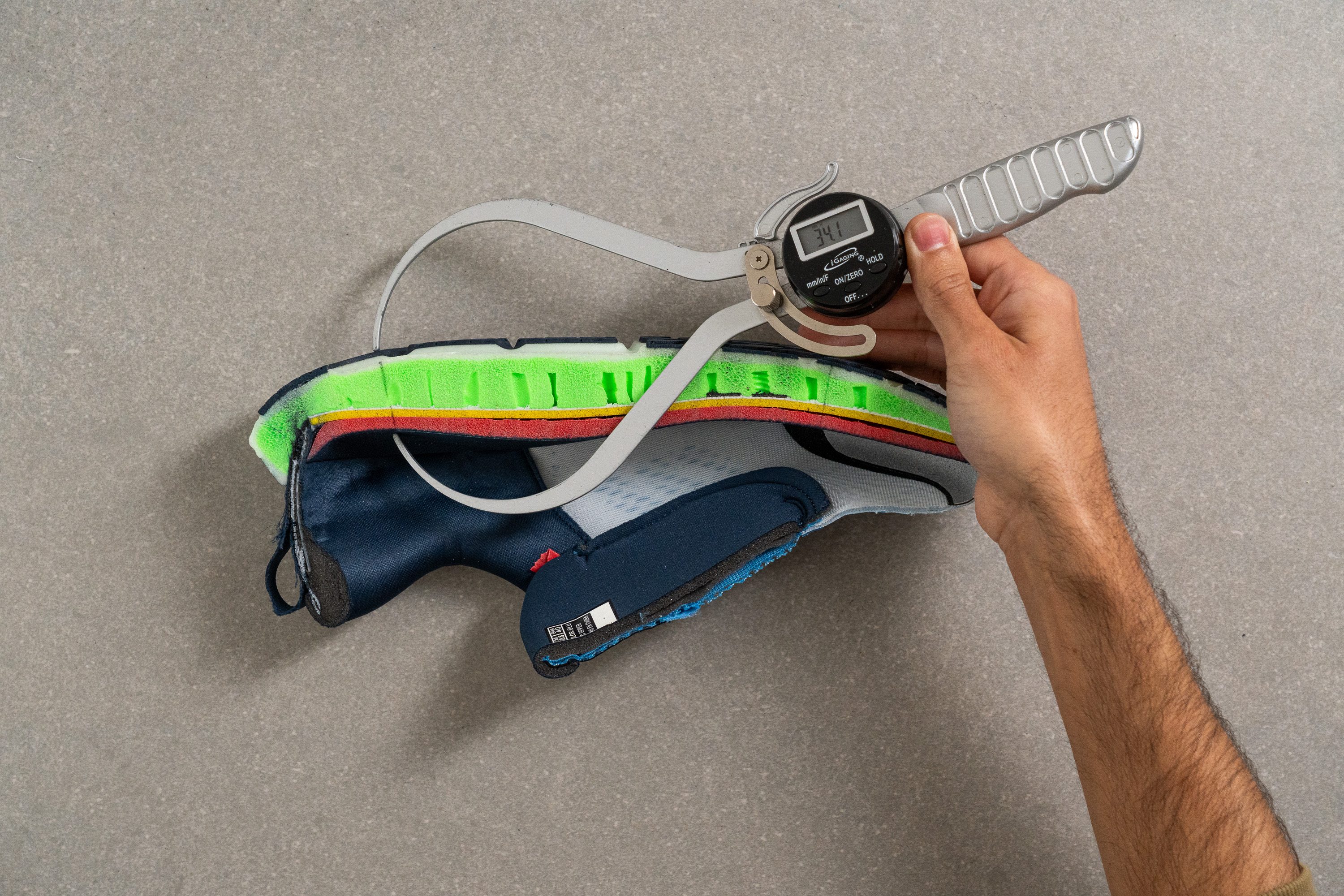
This amount of foam underfoot allows us to really sink into and savor the GRR 11's plush midsole foam, thus improving our sense of perceived cushioning as the shoe effectively dampens our landings before propelling us forward. We, therefore, recommend the GRR 11 to heel-striking runners who want a daily trainer that's protective enough for the occasional long-distance run.
| GO RUN Ride 11 | 34.1 mm |
| Average | 34.8 mm |
Forefoot stack
We found a similar discrepancy with the official forefoot stack measurement provided by Skechers. While stated to be 32 mm thick, we found it to be significantly lower at only 27.6 mm according to our caliper measurements. This is only slightly higher than our current lab average with more than enough protective foam in that area to mute out the harsh asphalt below and provide us with nice and peppy toe-offs.
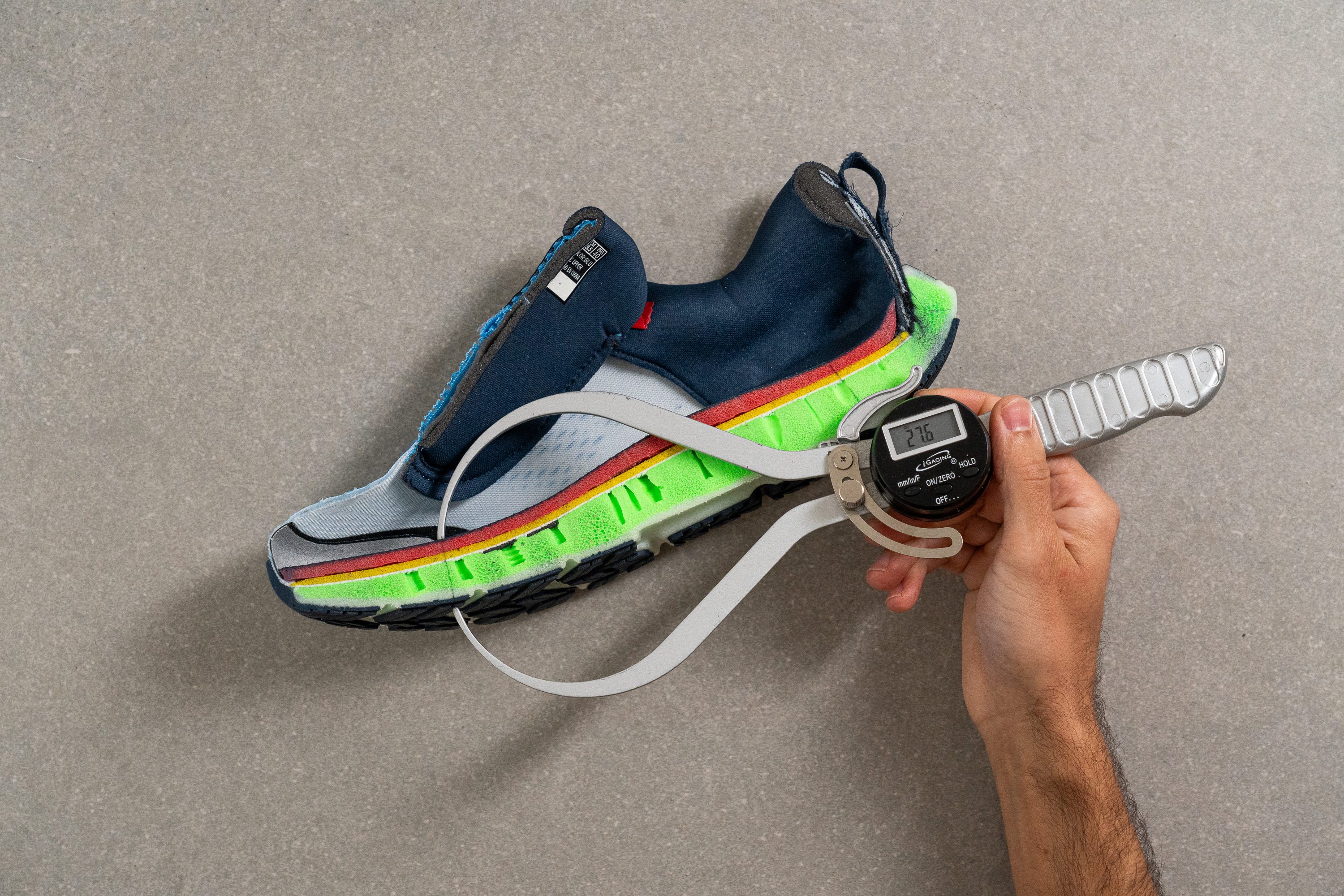
We use World Athletics guidelines in order to provide the most accurate stack measurements possible and have, over the course of testing well over a hundred pairs of running shoes in our lab, found many similar inconsistencies with brand-stated stack heights as this article explores.
| GO RUN Ride 11 | 27.6 mm |
| Average | 26.2 mm |
Drop
Despite the rather significant disparities in the official stack height figures, the GRR 11's heel drop is surprisingly accurate at 6.5 mm; only 0.5 mm higher than stated.
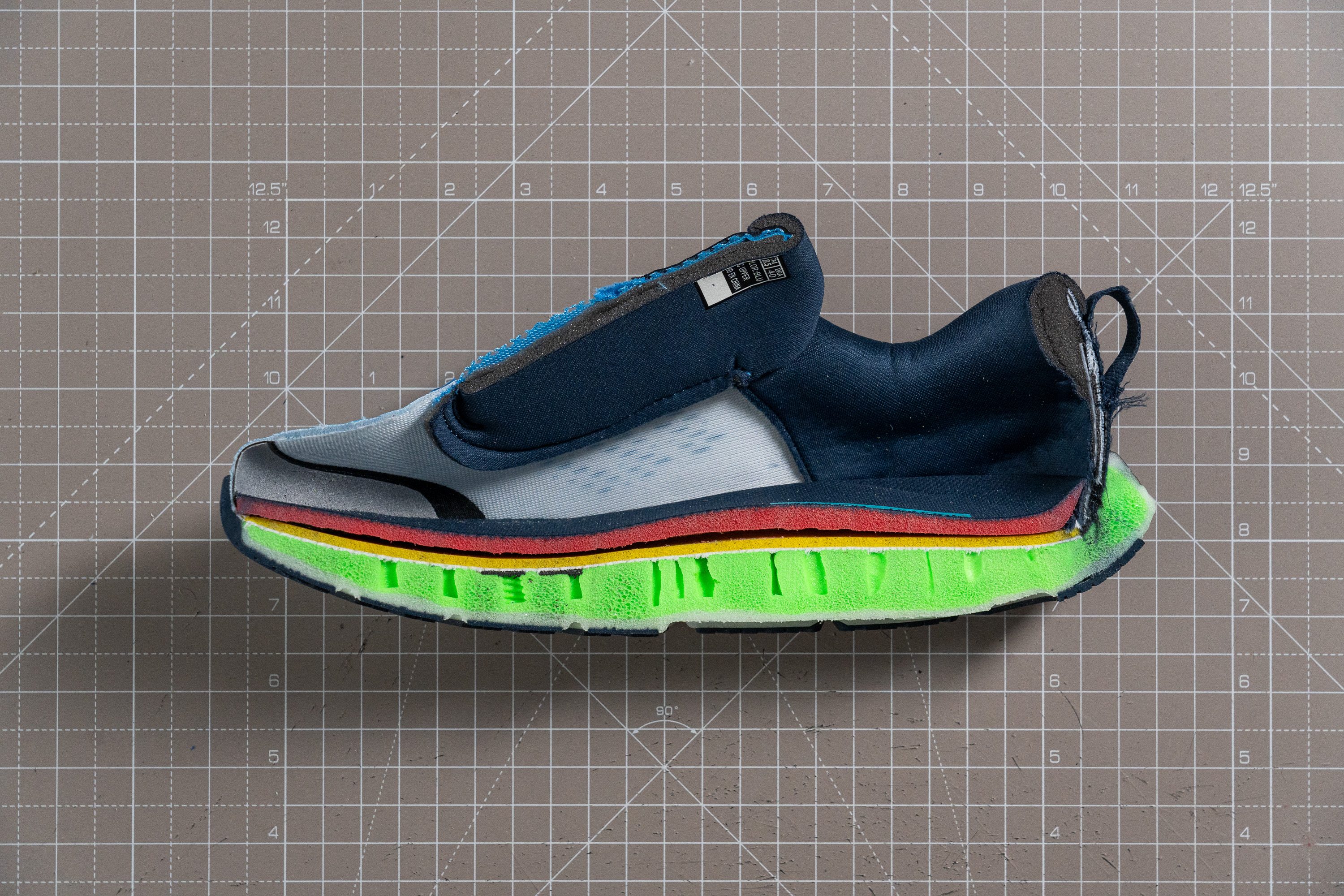
This classifies the GRR 11 as a mid-drop shoe which makes the shoe suitable for a wide variety of runners, whether heel or forefoot/midfoot strikers.
| GO RUN Ride 11 | 6.5 mm |
| Average | 8.6 mm |
Midsole softness
Pressing our durometer against the GRR 11's midsole yields a softer-than-average reading of 19 HA. That, however, doesn't tell the full story.
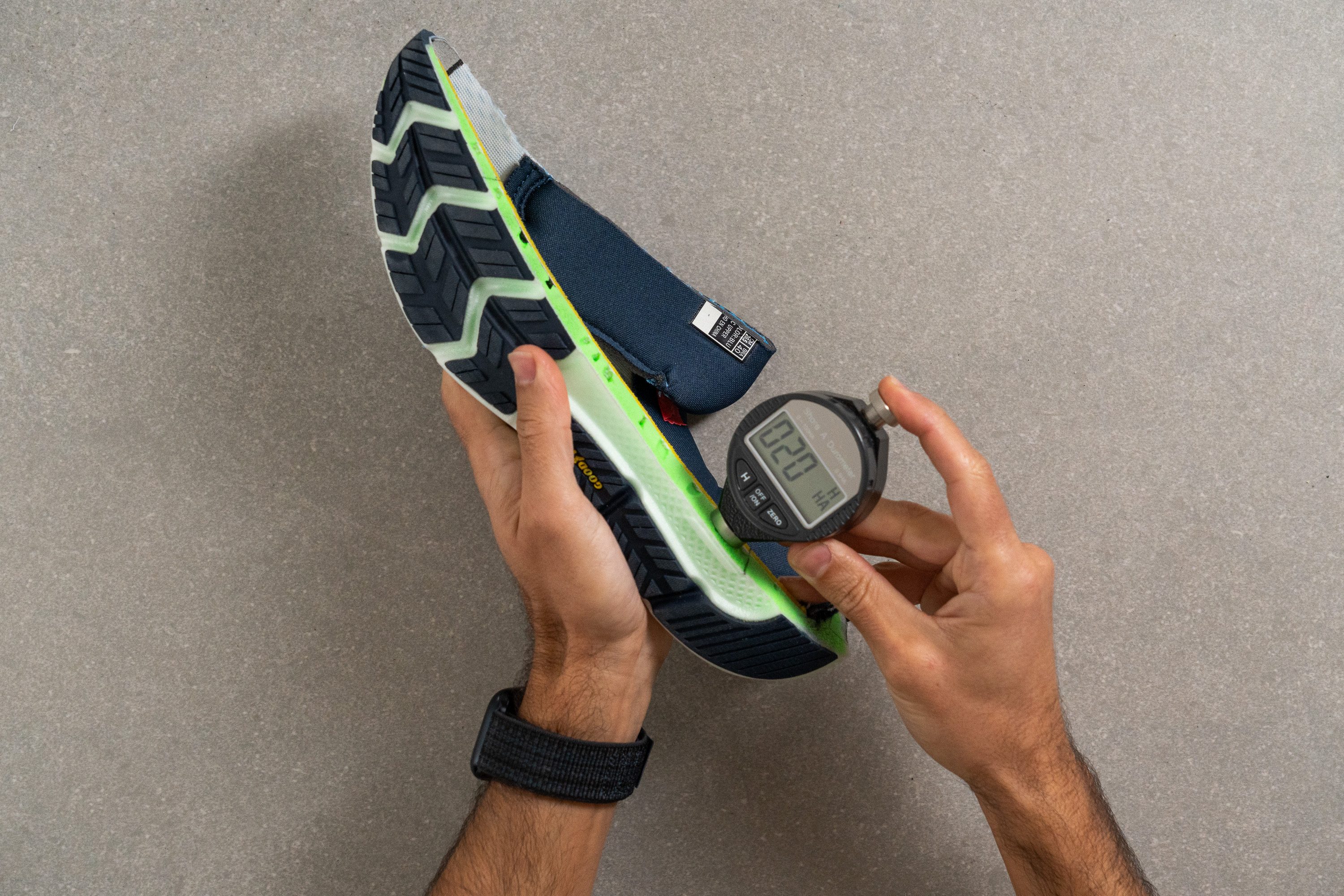
The GRR 11's HyperBurst Ice midsole foam is Skechers' supercritical foam that plays a massive part in the shoe's exceptionally comfortable, premium-feeling ride. It's made through a CO2-based process that expands a small and dense slab of EVA foam by infusing gas bubbles into it.
The end result is cushioning that's not only protective and plush but also very responsive underfoot, with a propulsive rebound that makes accelerating in the GRR 11 an absolute breeze.
| GO RUN Ride 11 | 19.0 HA |
| Average | 20.4 HA |
Size and fit
Size
Skechers GO RUN Ride 11 fits true to size (51 votes).
Width / Fit
Using our caliper, we measured the GRR 11's toebox to be narrower than average at only 96.4 mm wide at its widest point. This will provide a nice and snug fit for those with narrow to normal feet which, combined with the somewhat wide base, also improves stability. On the other hand, those with broad feet will almost certainly find the GRR 11 constrictive, especially toward the end of longer runs when the feet tend to swell up from repeated impact.

For those broad-footed runners who prefer a little more real estate in the toebox, we recommend the New Balance Fresh Foam X Kaiha Road as a similarly plush maximal daily trainer with good arch support.
This test follows an older methodology, which is why you don't see recently tested shoes in the chart. Results from different methodologies can not be compared.
| GO RUN Ride 11 | 96.4 mm |
| Average | 98.5 mm |
Toebox width
Moving up to the area around the big toe, the GRR 7's toebox is actually on par with our current lab average at 77.4 mm according to our caliper.
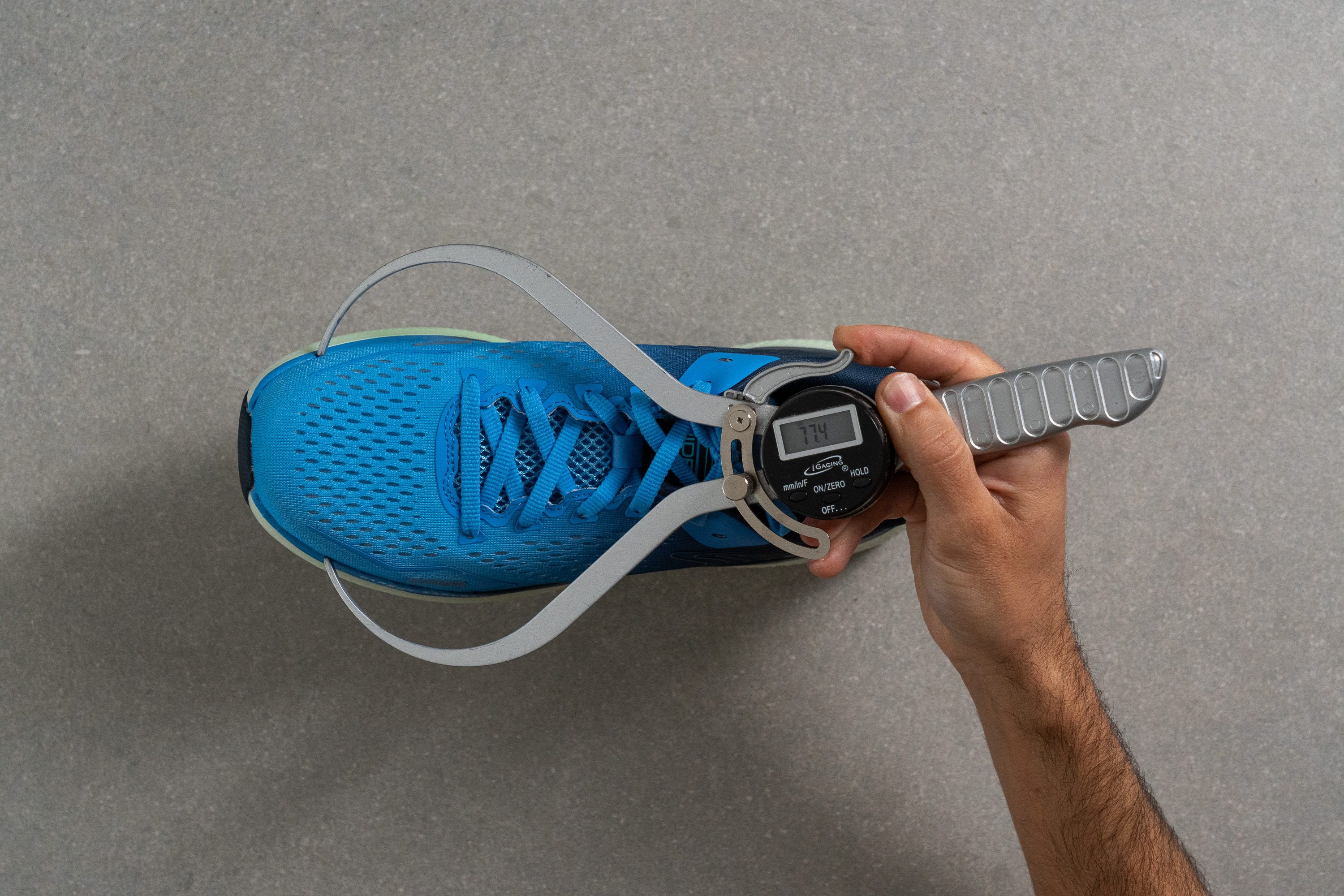
This means that the GRR 11 doesn't taper as dramatically as the average road shoe does, with this more square silhouette giving us plenty of room for our toes to splay out naturally and comfortably without bumping up against the sidewalls.
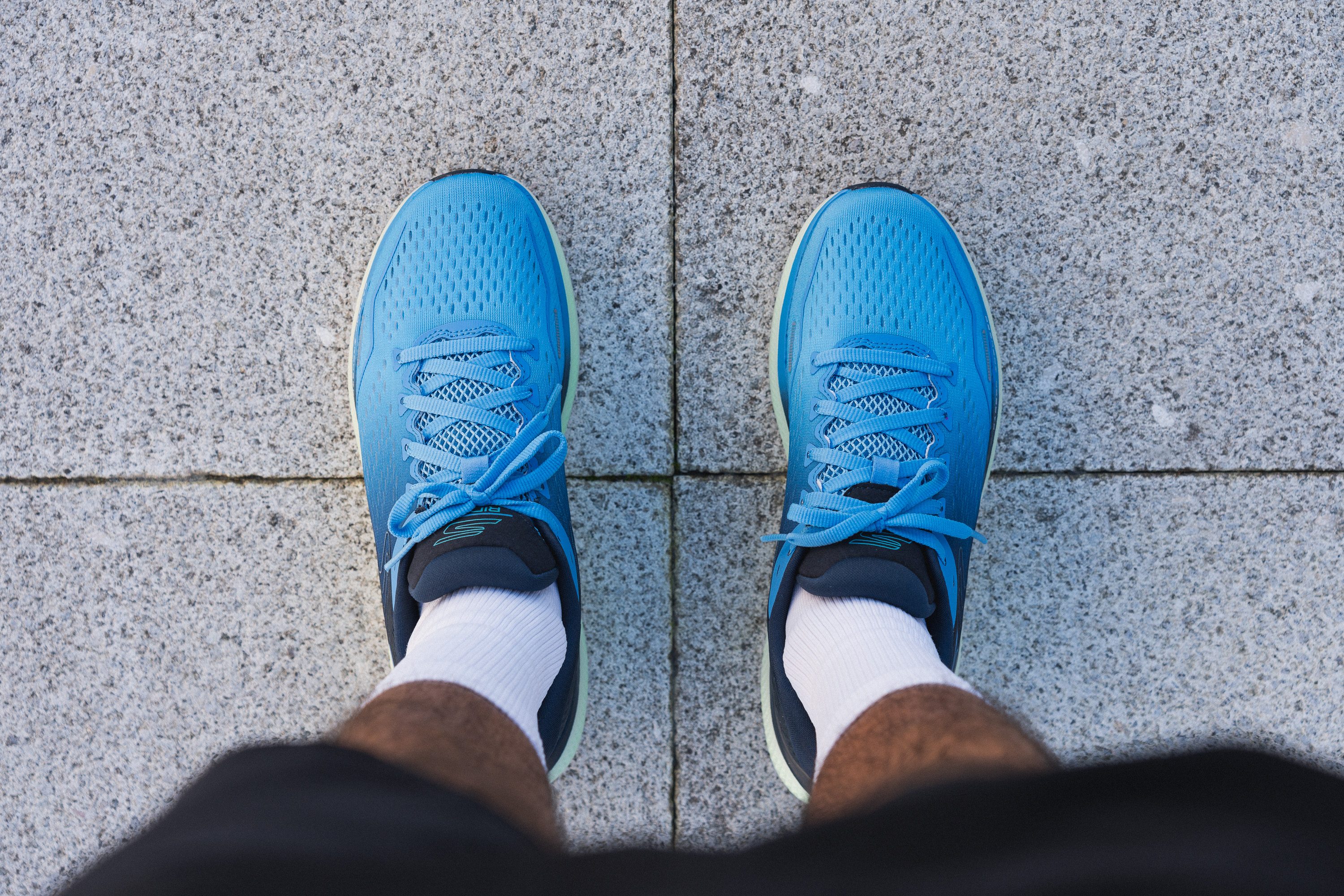
This test follows an older methodology, which is why you don't see recently tested shoes in the chart. Results from different methodologies can not be compared.
| GO RUN Ride 11 | 77.4 mm |
| Average | 78.4 mm |
Traction / Grip
Traction test
The GRR 11’s outsole brings another tire-brand collaboration to the table as Skechers partnered with Goodyear, aiming to match the success of Adidas and Continental. We tested it and found that its grip didn’t deliver, especially when the road turned slick. With a modest 0.30 score, it performs decently in dry weather but lacks bite in wet conditions.
| GO RUN Ride 11 | 0.30 |
| Average | 0.48 |
Outsole design
The outsole uses Goodyear rubber placed strategically across high-wear areas of the heel and forefoot. Chevron-shaped cutouts dominate the rear section, while longitudinal grooves and a huge central void add flexibility and reduce weight.
Foam is absolutely exposed in the midfoot, and overall rubber coverage is partial but generous in the forefoot enough to support daily road mileage.
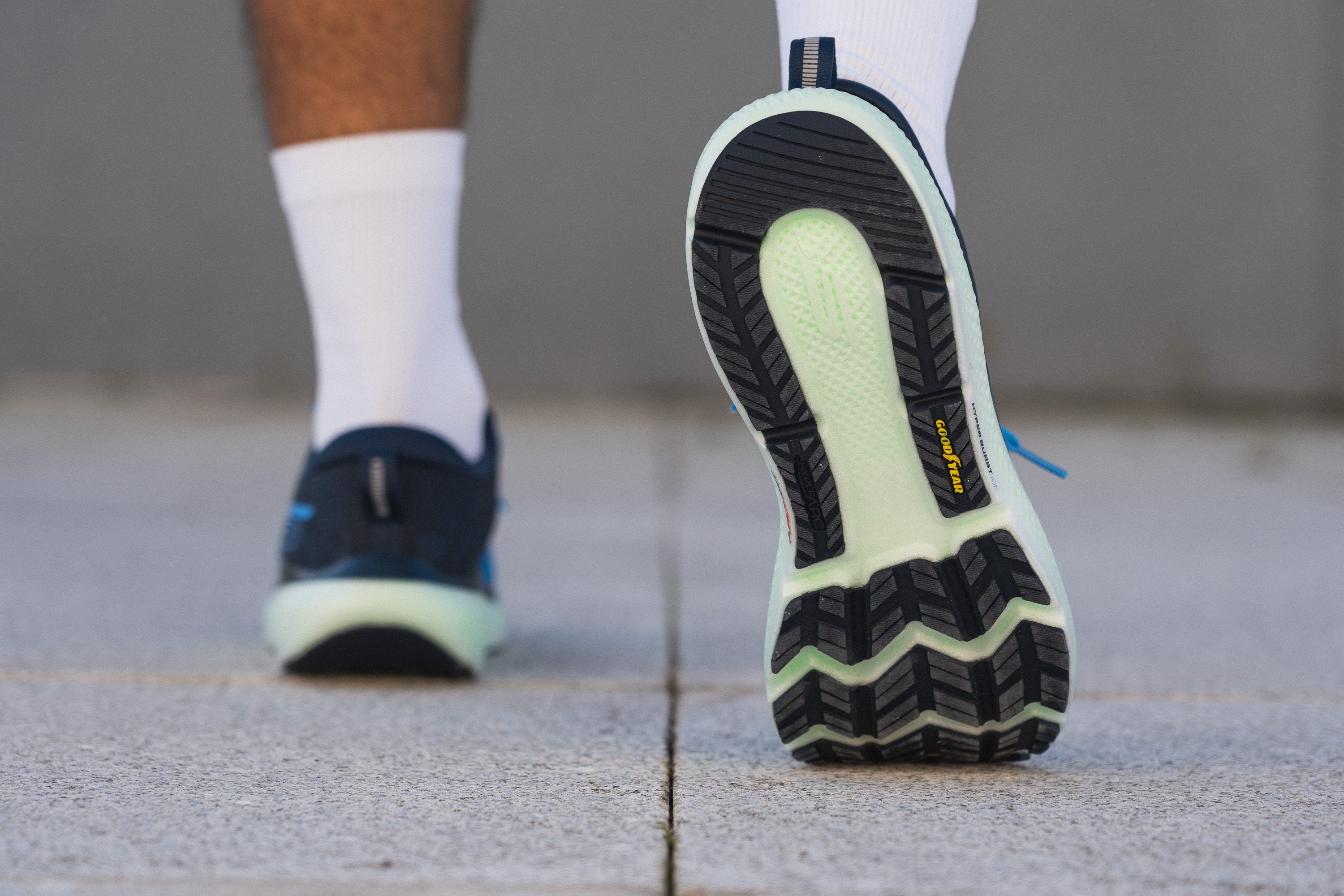
Flexibility / Stiffness
With 12.5N of force needed to bend the shoe to the desired point, the GRR 11 is more flexible than the average road shoe, making it able to conform with the natural flexion of our foot during our stride.

| GO RUN Ride 11 | 12.5N |
| Average | 15.3N |
Stiffness in cold (%)
We also repeated the stiffness test after leaving the shoe in our freezer and found that 35.2N of force is needed to bend the chilled GRR 11 to the desired point. This might be a little stiff, but ist' still more flexible than the average road shoe under similar conditions. What's more, with only a 36.1% increase in stiffness when exposed to the cold, the GRR 11 should feel pretty consistent all year round.
| GO RUN Ride 11 | 36% |
| Average | 33% |
Weight
With all that foam in the midsole and the generous amount of padding throughout the shoe, it's no wonder that the GRR 11 is heavier than the average road shoe at 10.1 oz (285g).
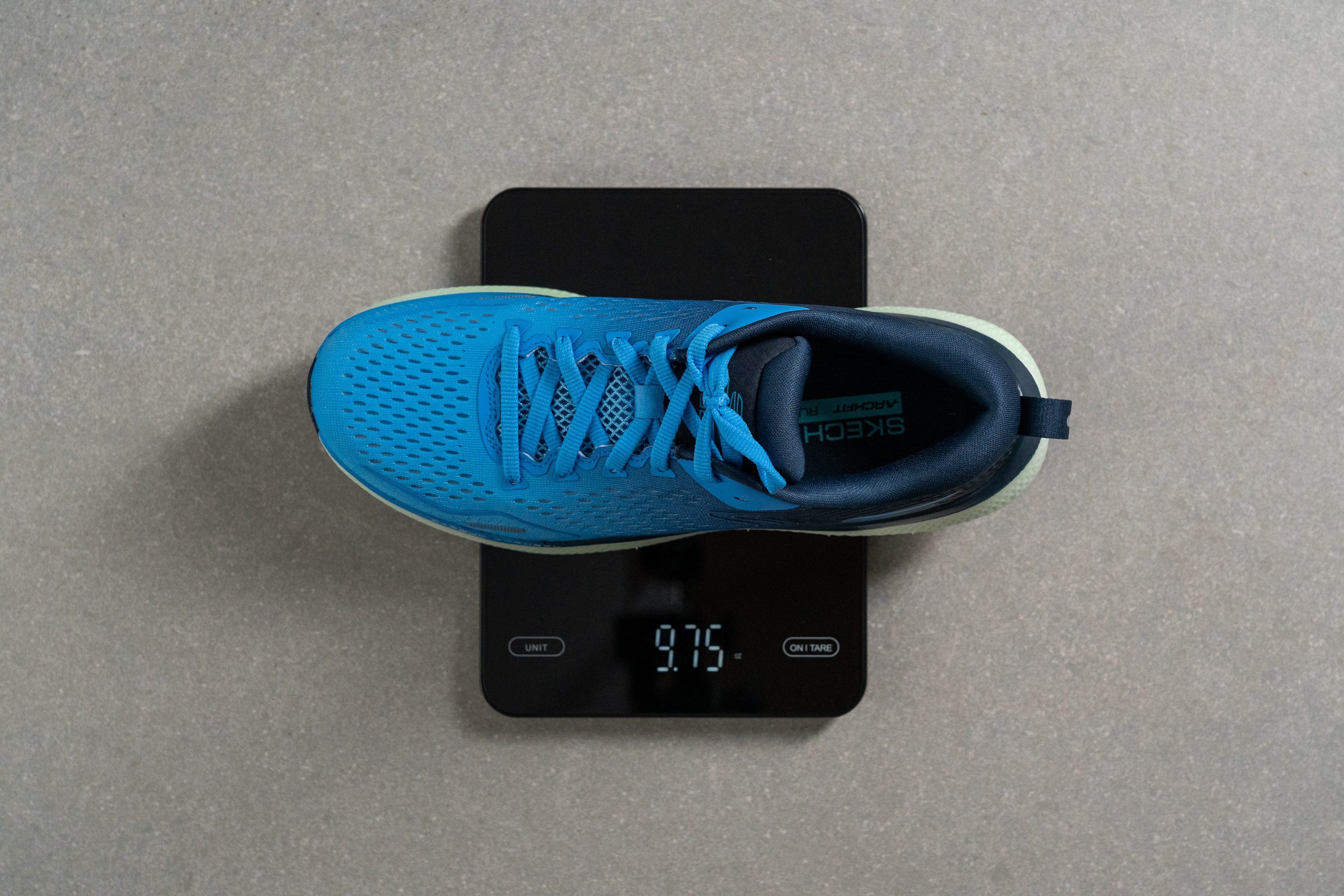
Despite this, however, the shoe still feels pretty light on the foot and isn't too prohibitive for pushing the pace or long-distance efforts. This is thanks in part to the lively midsole and its rockered design that promotes incredibly smooth transitions and an efficient stride.
The GRR 11's HyperArc rocker geometry is among the most pronounced we've seen, it's virtually a rocking horse! For a better understanding of what rockered running shoes have to offer, check out this article on the matter that dives into the subject based on our findings here in the lab.
| GO RUN Ride 11 | 10.1 oz (285g) |
| Average | 9.3 oz (264g) |
Breathability
Despite a slow start in our breathability test, the GRR 11 eventually lets out a steady stream of smoke that filters out through various parts of the shoe. This leads us to give the shoe an above-average score of 4 out of 5 which makes it a good choice for runners living in warm climates.
As we can see from inspecting a backlit cross-section of the GRR 11's upper, the light is able to shine through the many pores in the mesh with ease, clearly indicating the many avenues for heat to vent out of the shoe.
Looking at the engineered mesh upper under our microscope, we can see that it is made up of interwoven braids with lots of games that promote airflow throughout the shoe. What's more, they open up to form a pattern of perforations that reveal the less dense layer of mesh underneath which might explain the slow start to our smoke test.


| GO RUN Ride 11 | 4 |
| Average | 3.7 |
Stability
Lateral stability test
The squishiness of the midsole raises some questions regarding the stability of the shoe, though we didn't feel overly unsteady when we shifted our weight from side to side in this shoe.
While this might be stable enough for those with mildly pronating strides, we recommend that runners with pronounced overpronation look into a dedicated stability shoe like the Hoka Gaviota 5 to avoid injury.
Torsional rigidity
We were met with a fair amount of resistance as we attempted to bend and twist the GRR 11 in our hands, leading us to give it a somewhat stiff torsional rigidity score of 4 out of 5 on our subjective scale. This is no doubt a result of the shoe's H-shaped, carbon-infused shanks that effectively offset the softness of the midsole by preventing excessive lateral movements. As such, the GRR 11's base remains relatively level throughout our stride giving us a stable landing platform while testing this shoe.
| GO RUN Ride 11 | 4 |
| Average | 3.5 |
Heel counter stiffness
The GRR 11's generously padded and well-structured heel counter is moderately stiff, earning a middle-of-the-road score of 3 out of 5 in our manual assessment.
The rearfoot lockdown does feel somewhat loose as we start to run in the shoe, but the sheer amount of padding in the collar does manage to keep our heel from rubbing up against it.
| GO RUN Ride 11 | 3 |
| Average | 2.9 |
Midsole width - forefoot
Using our caliper, we measured the GRR 11's midsole to be 110.9 mm wide at the forefoot. This is slightly narrower than our current lab average but still provides a broad enough platform to ensure we enjoyed steady landings and toes-offs without the shoe feeling too blocky when taking corners.
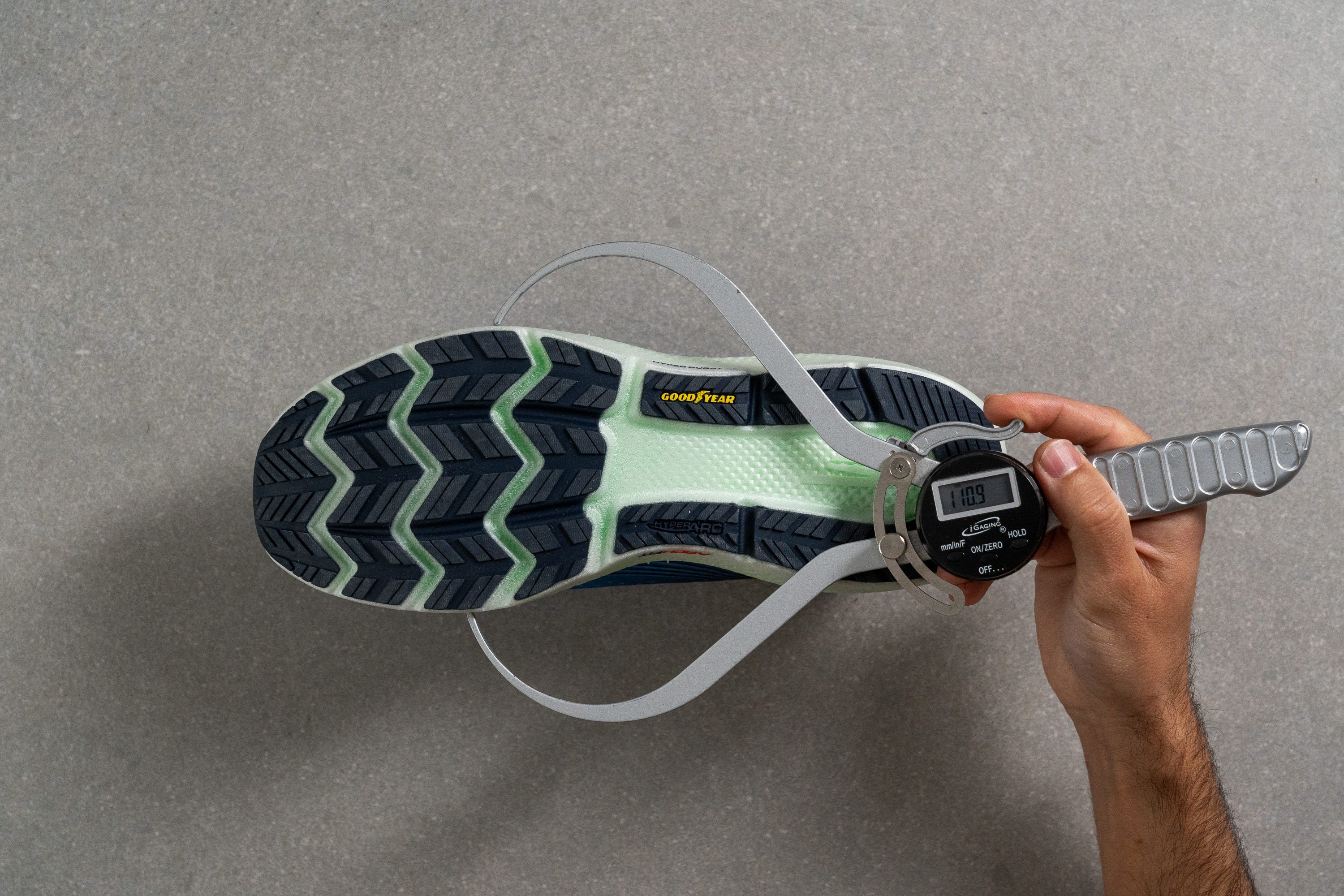
| GO RUN Ride 11 | 110.9 mm |
| Average | 114.4 mm |
Midsole width - heel
Back at the heel, the midsole is slightly wider than average, measuring 92.4 mm wide.
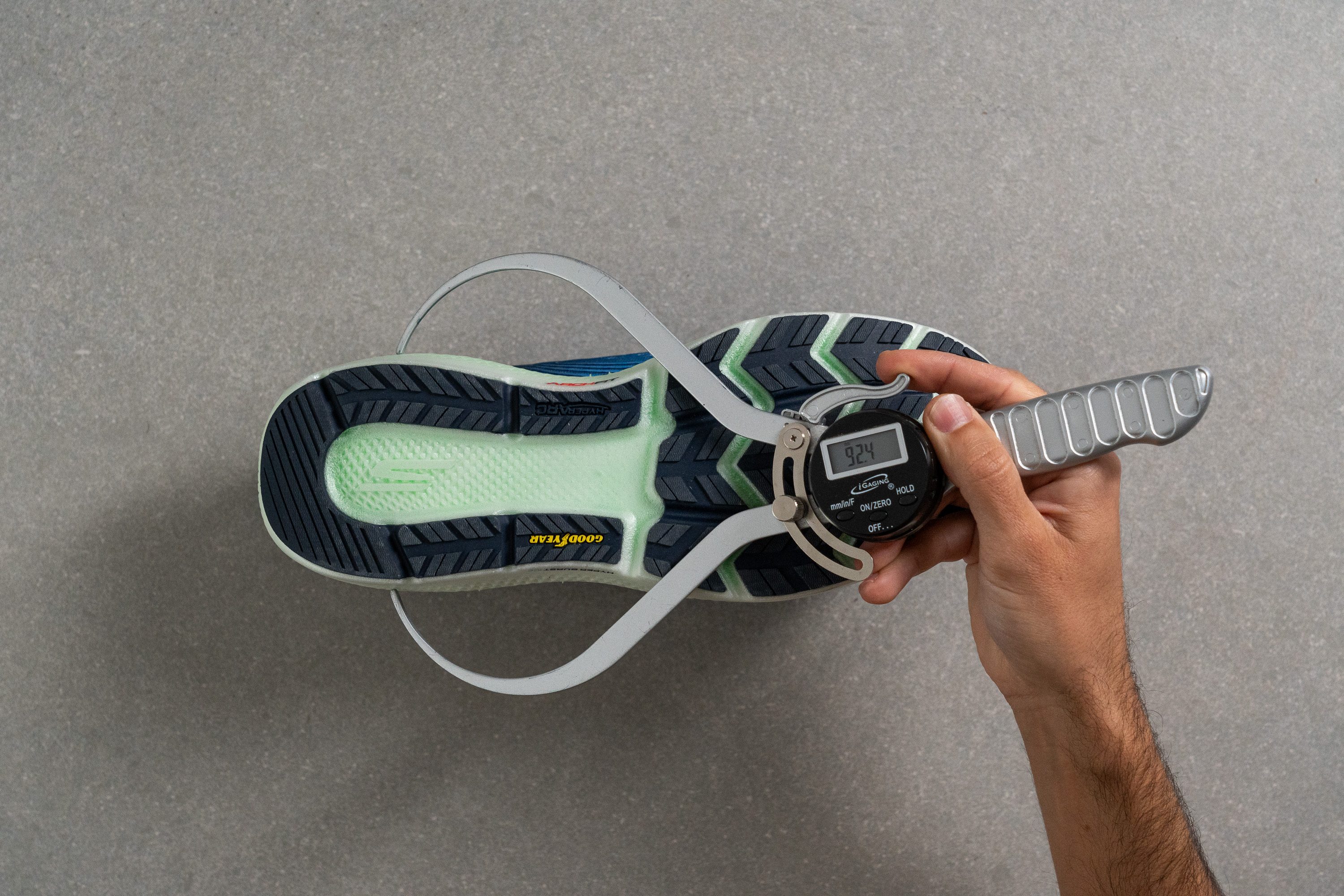
This means that runners with a heel-striking stride should also feel surefooted and stable in this shoe.
| GO RUN Ride 11 | 92.4 mm |
| Average | 90.7 mm |
Durability
Toebox durability
First up in our series of durability tests designed to simulate extreme wear and tear is the GRR 11's toebox. Spinning at 5K RPM, we set our Dremel's grinding element against it with 3.2N of force for four short seconds.
That was enough time for the tool to mince through the shoe's mesh. However, it only managed to go clean through the thick outer layer without doing too much damage to the layer underneath. This leads us to give the GRR 11 a toebox durability score of 2 out of 5.

| GO RUN Ride 11 | 2 |
| Average | 2.6 |
Heel padding durability
Next, we turned our attention to the heel counter and set our relentless Dremel against it for another four seconds of grinding. The tool, once more, makes quick work of the lining and sends shreds of padding flying almost immediately.
The gaping hole left in the heel counter earns the GRR 11 a heel padding durability score of 1 out of 5. We therefore don't recommend going sockless often in this shoe as the repeated friction of heel rubs will likely compromise the integrity of the heel collar and, in turn, the GRR 11's lockdown.

| GO RUN Ride 11 | 1 |
| Average | 3.4 |
Outsole durability
We fired up our Dremel one last time, this time spinning at 10K RPM, and set it against the GRR 11's outsole. The abrasive element seems to have no effect at all, with only the occasional flecks of debris being sporadically cast aside throughout the twenty-two-second test.
Using our tire tread gauge to measure the indentation left in the aftermath of the test, we found that only 0.4 mm of rubber had been shorn away, thus validating the confidence we had in the GRR 11's outsole. We, therefore, expect the shoe to surpass the 400-mile mark with very few signs of wear and tear to the outsole.
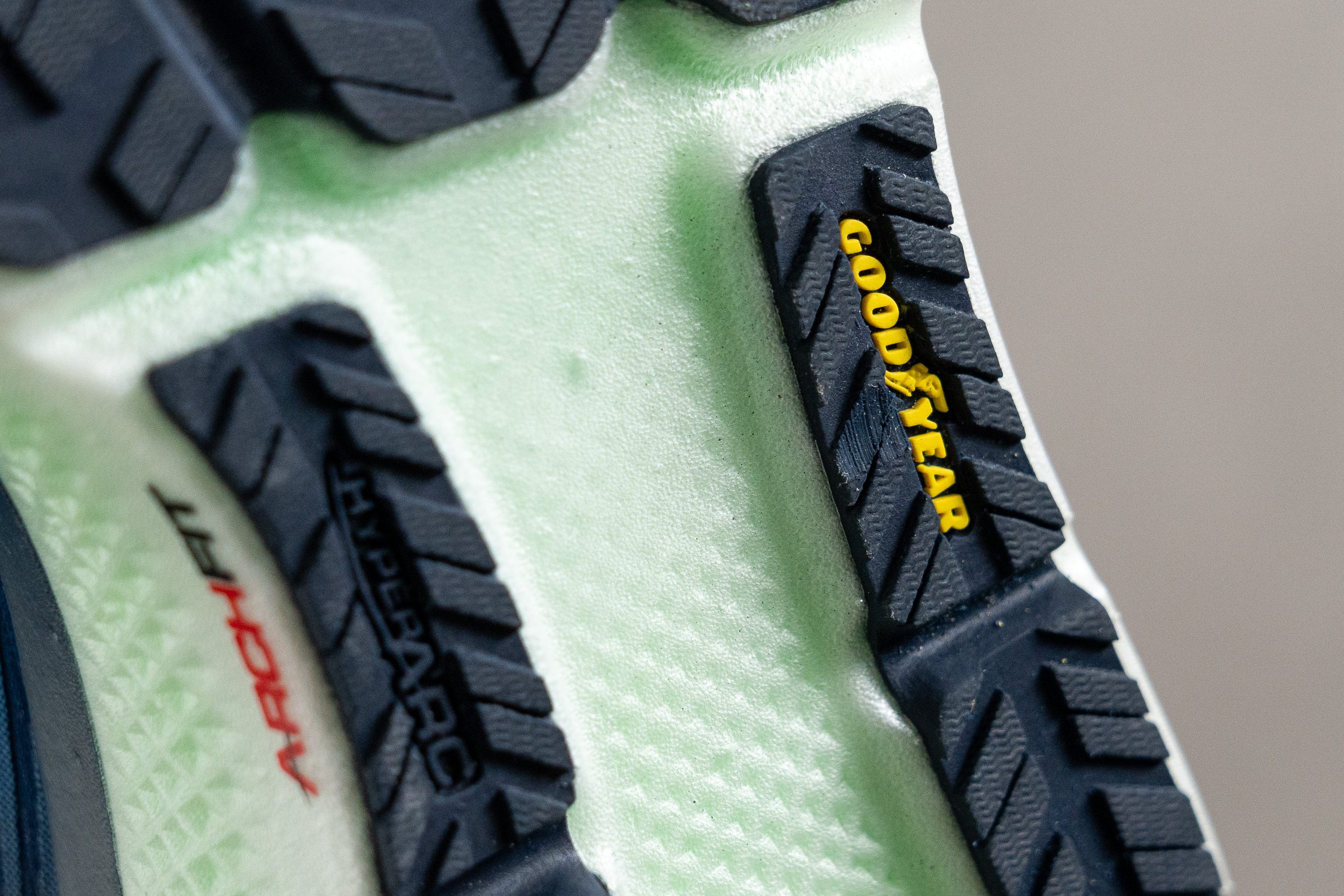
| GO RUN Ride 11 | 0.4 mm |
| Average | 1.1 mm |
Outsole thickness
The GRR 11's outsole is on par with our current lab average at 2.9 mm thick according to our caliper measurements. This is more than enough rubber as our previous test clearly demonstrates.
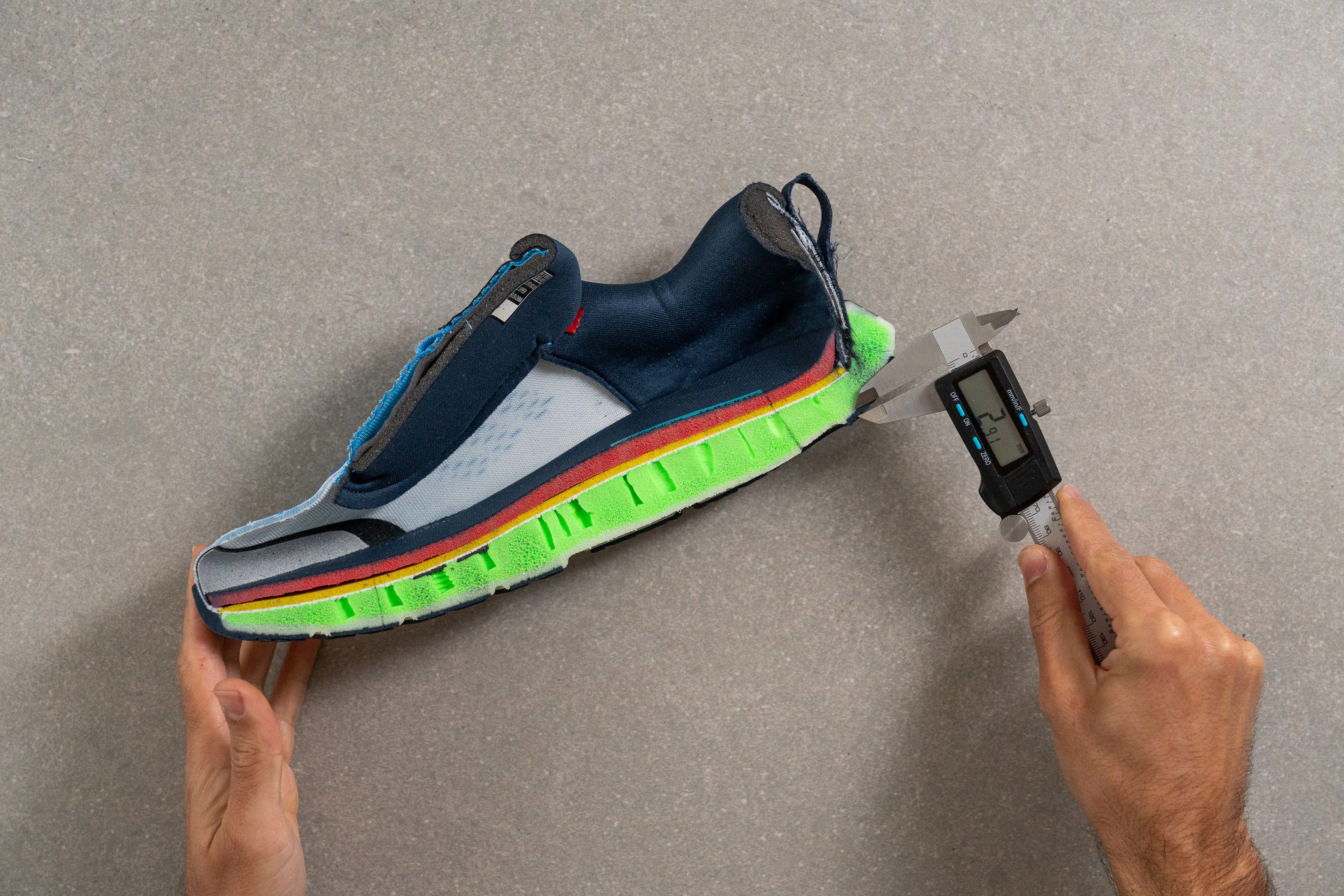
| GO RUN Ride 11 | 2.9 mm |
| Average | 3.2 mm |
Misc
Insole thickness
At 5.2 mm thick according to our caliper measurements, the GRR 11's patented Arch Fit insole is thicker than average and provided us with excellent arch support during our test runs. Additionally, it nicely complements the midsole cushioning with a well-padded and soft internal surface.
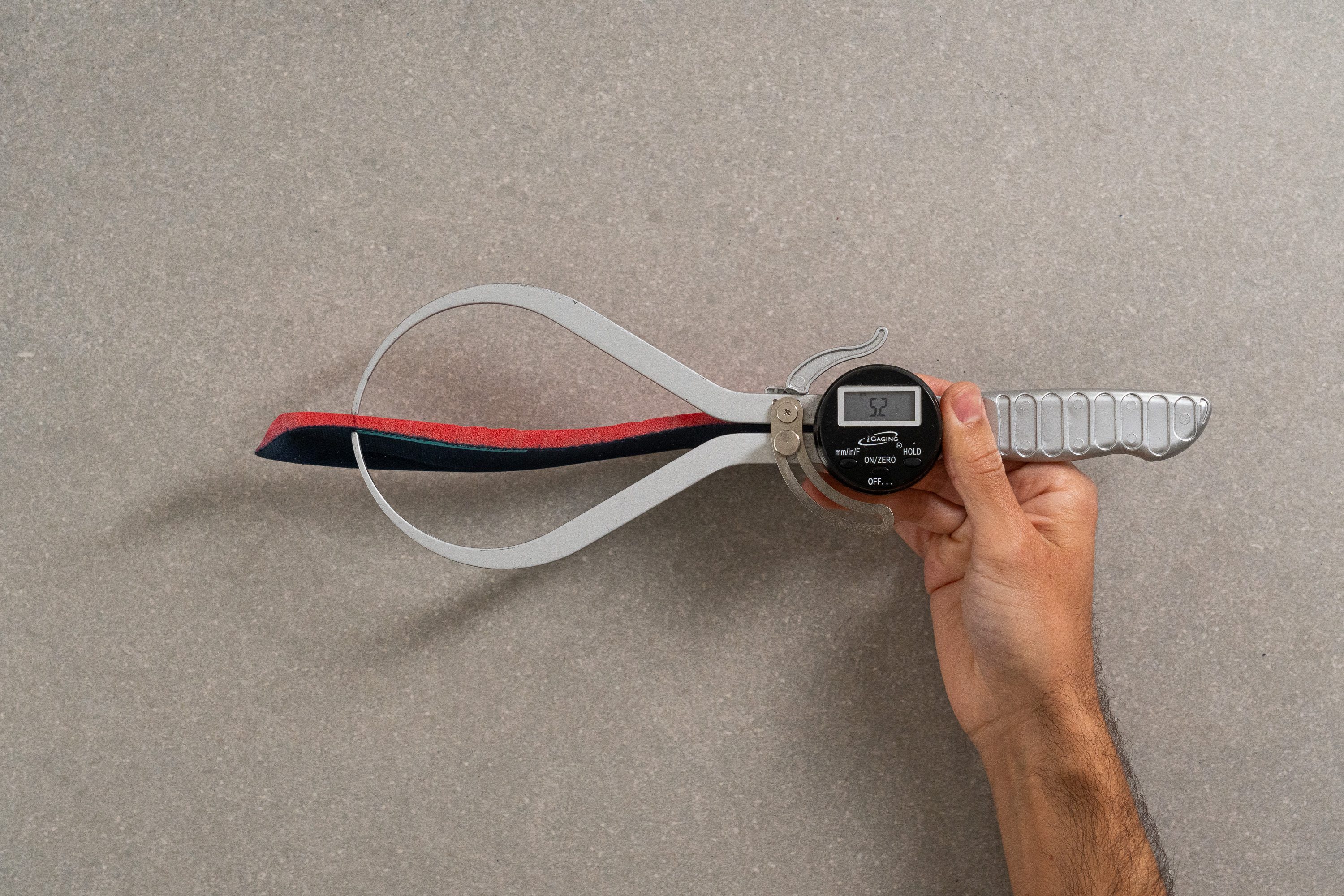
This easy-to-overlook feature makes the GRR 11 an excellent daily trainer for flat-footed runners and those with mild overpronation in their strides who don't want a dedicated stability shoe.
| GO RUN Ride 11 | 5.2 mm |
| Average | 4.5 mm |
Removable insole
The patented Arch-Fit insole is fully removable, so replacing it when needed is possible.
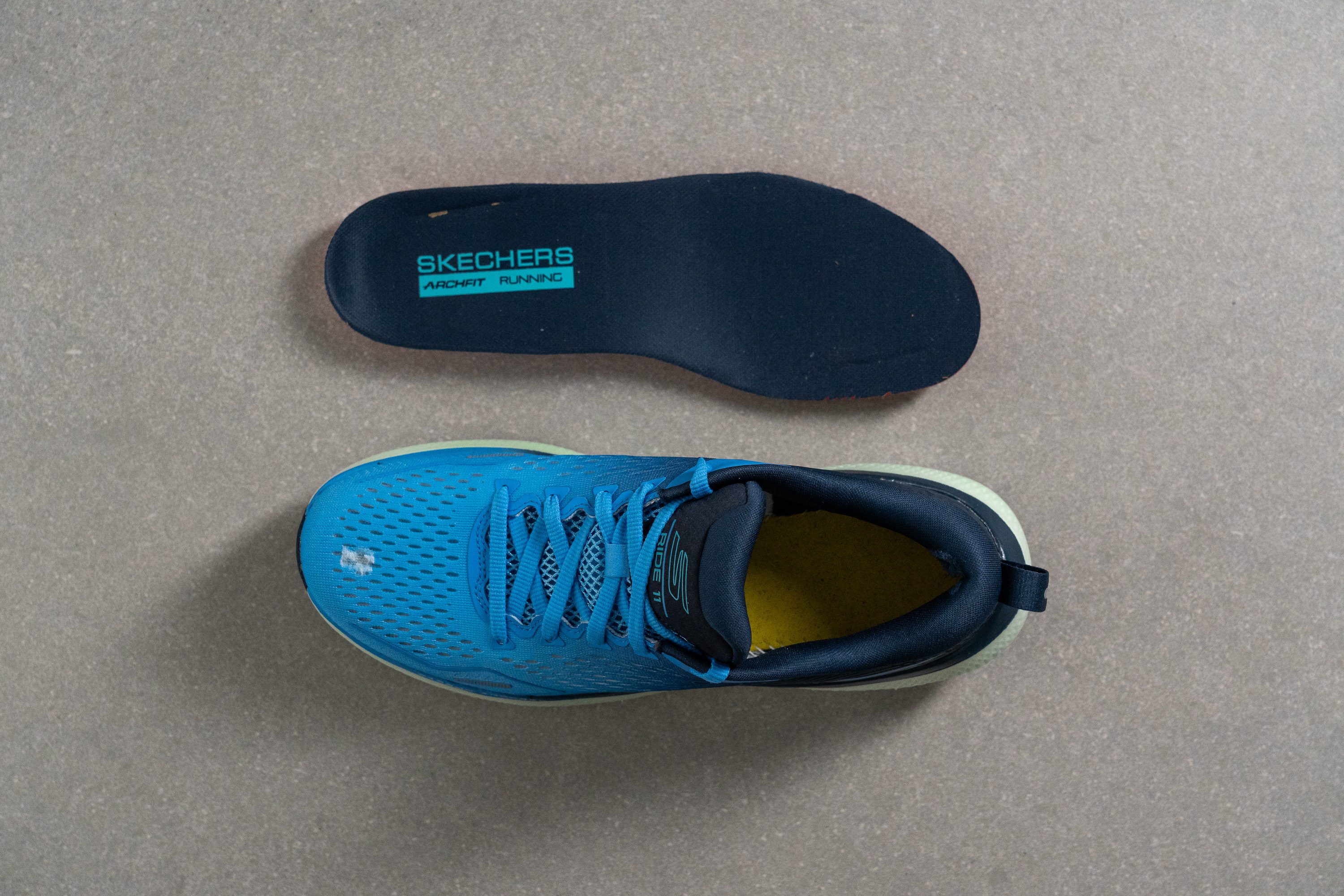
| GO RUN Ride 11 | Yes |
Midsole softness in cold

Midsole softness in cold (%)
The midsole also reacts pretty well to cold conditions, becoming only 25% more firm after chilling in our freezer for twenty minutes. This makes the GRR 11 about as consistent as the average road shoe when temperatures drop, though it remains softer than average with a post-freezer durometer reading of only 23.8 HA. So while it might feel a little less plush as winter rolls around, the GRR 11 should still provide a balanced level of cushioning no matter how frigid it gets.
| GO RUN Ride 11 | 25% |
| Average | 24% |
Reflective elements
The finger loop at the heel of the GRR 11 features a small series of reflective elements that provide minimal added visibility. We recommend sticking to well-lit routes or using additional high-vis gear if going for a nocturnal run by the road in the GRR 11.
| GO RUN Ride 11 | Yes |
Tongue padding
The GRR 11 has a girthy tongue that measures 8.5 mm thick. This provides incredible comfort around the instep while also contributing to the shoe's secure midfoot lockdown. 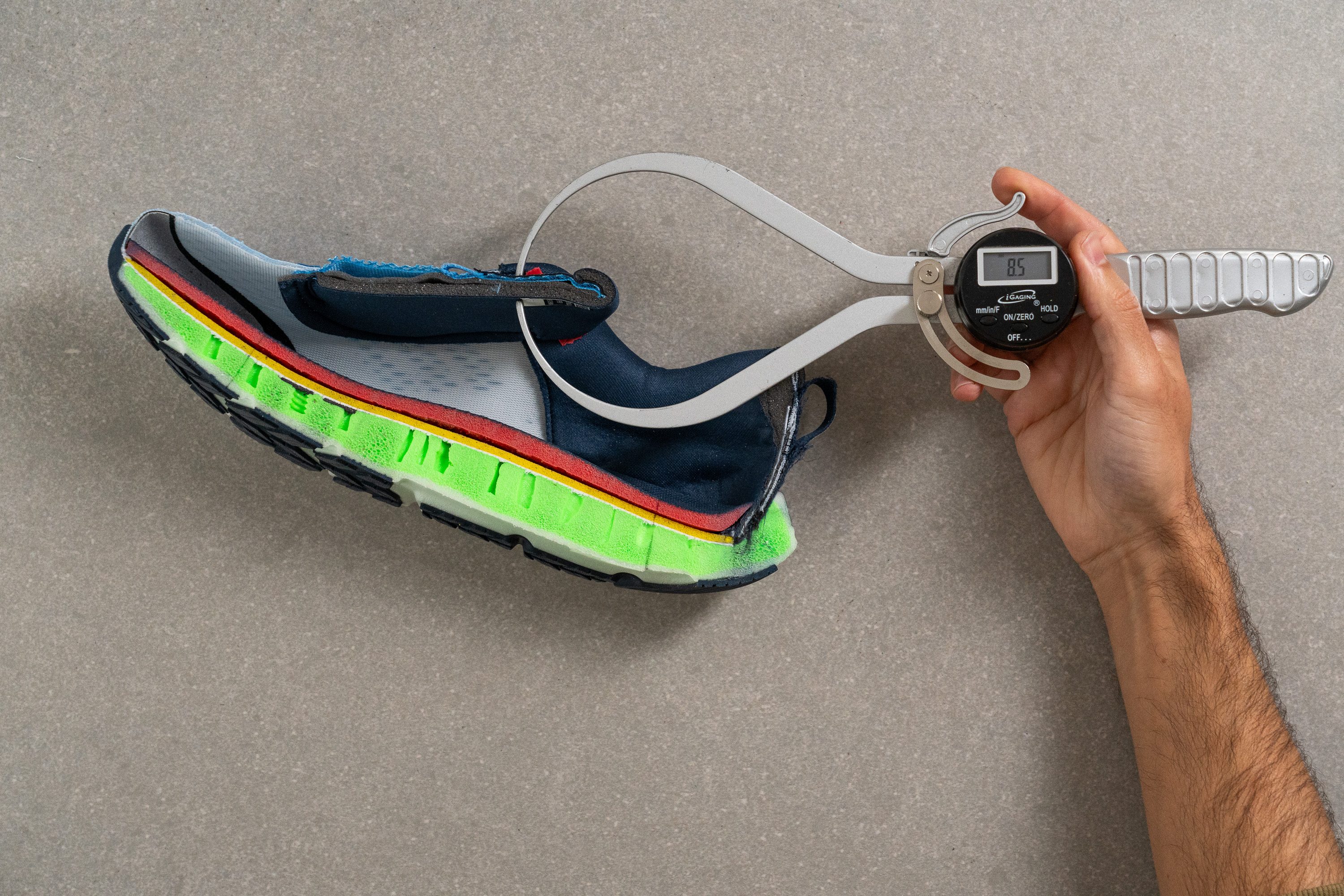
It also means that lace bite was the furthest thing from our minds while testing the GRR 11.
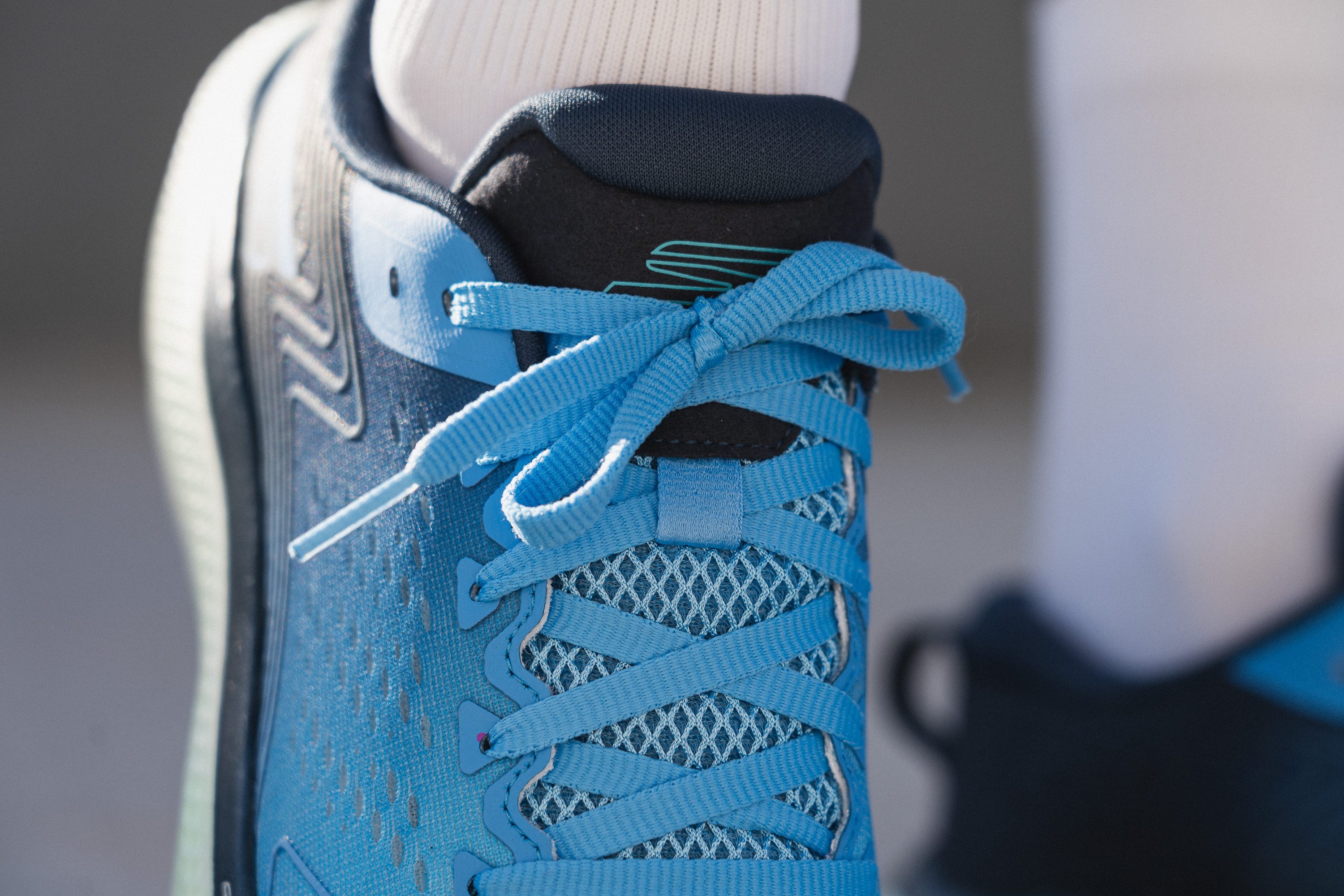
| GO RUN Ride 11 | 8.5 mm |
| Average | 5.8 mm |
Tongue: gusset type
The GRR 11's tongue isn't gusseted, though we didn't have any issues with it slipping to the side while testing thanks to how broad and generously padded it is.
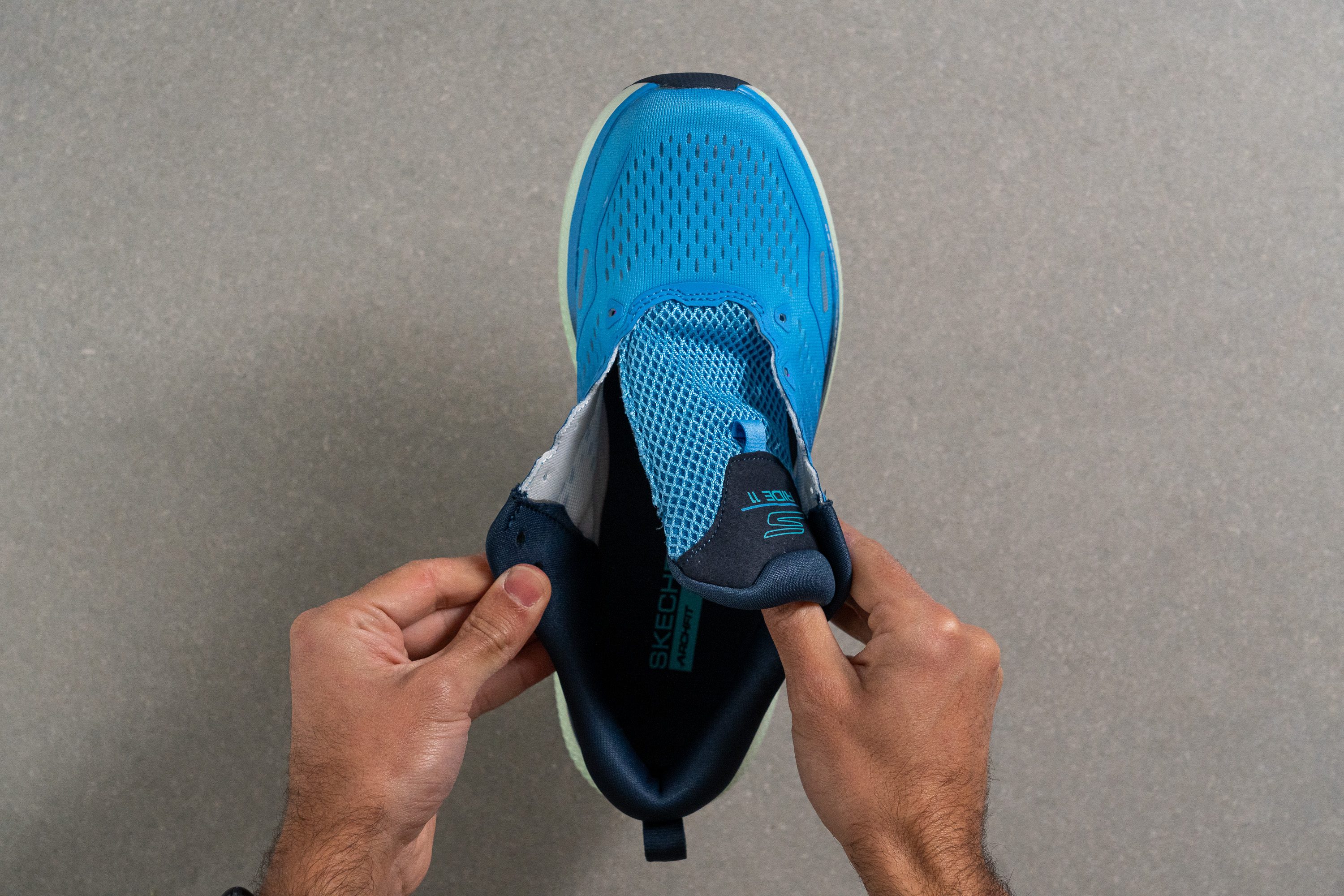
| GO RUN Ride 11 | None |
Heel tab
The GRR 11 features a handy little finger loop at the heel which makes sliding the shoe on a little smoother and easier.
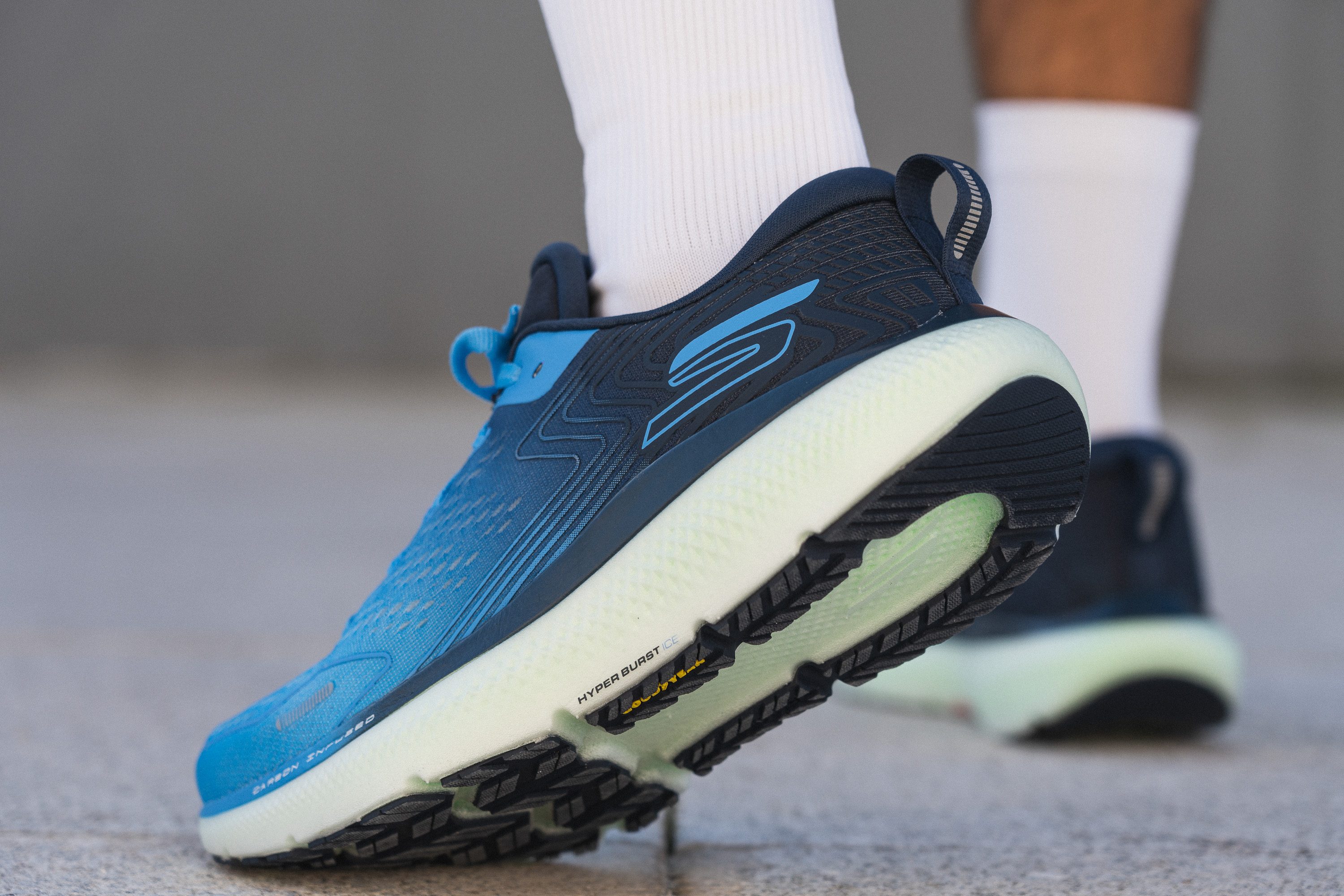
| GO RUN Ride 11 | None |

